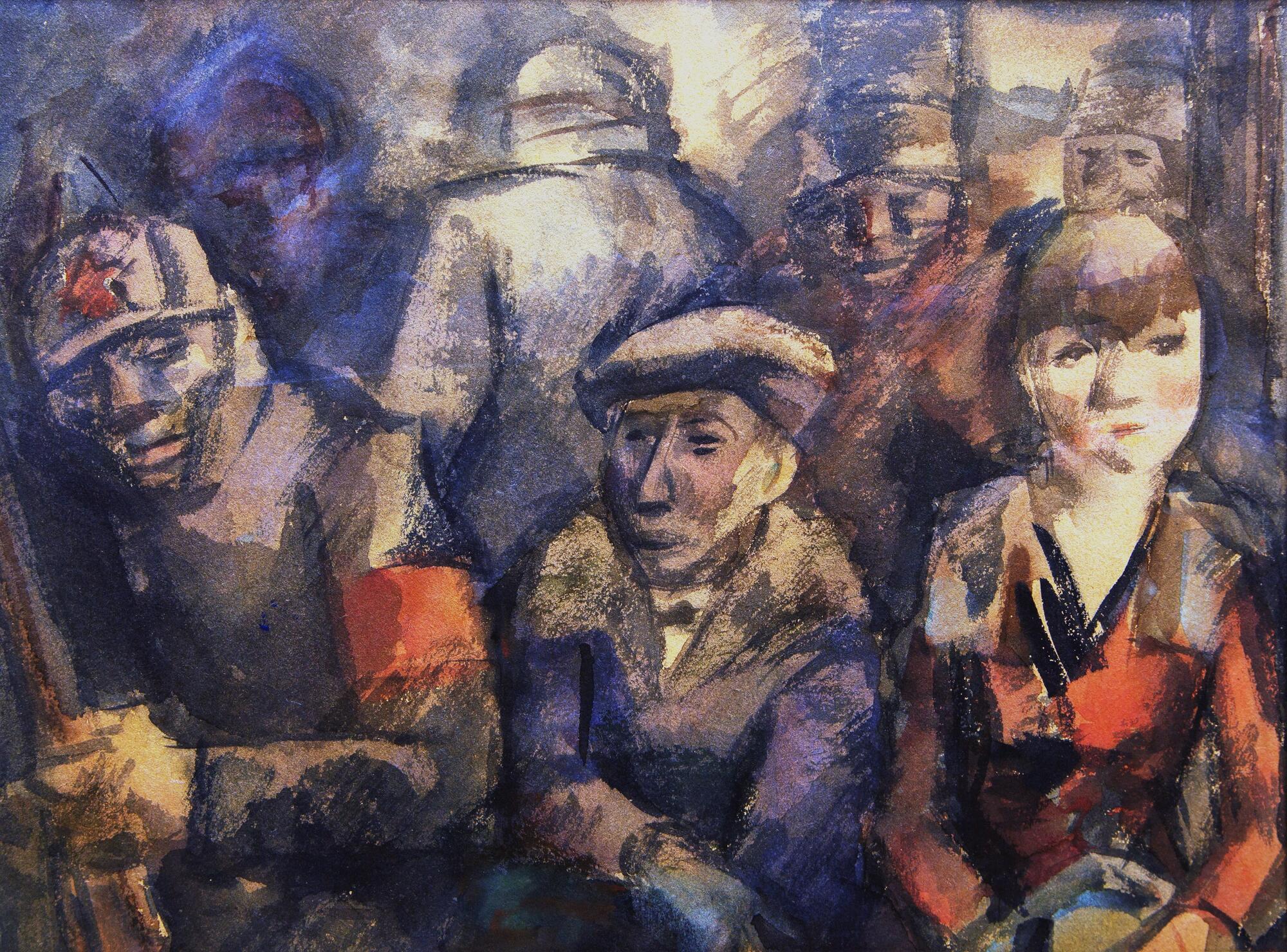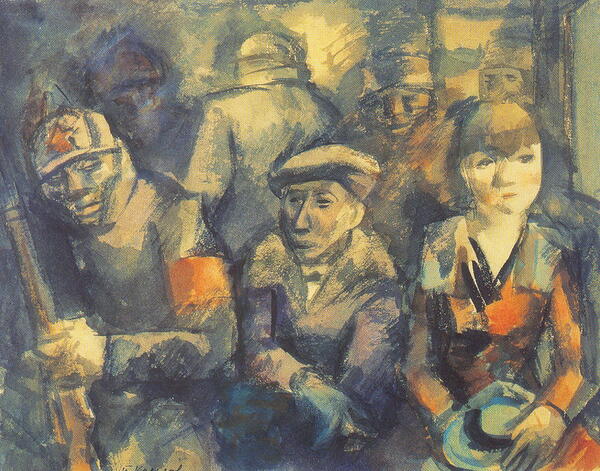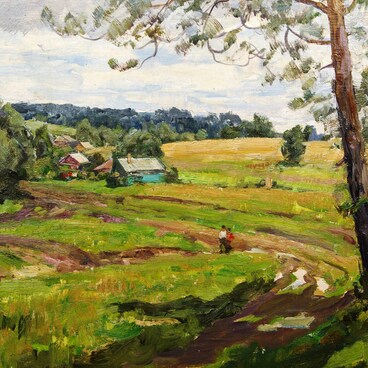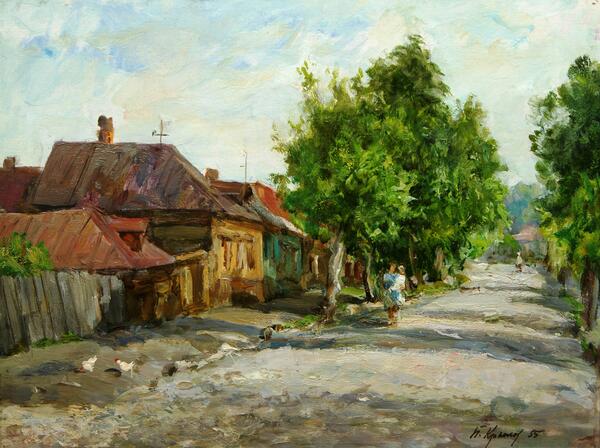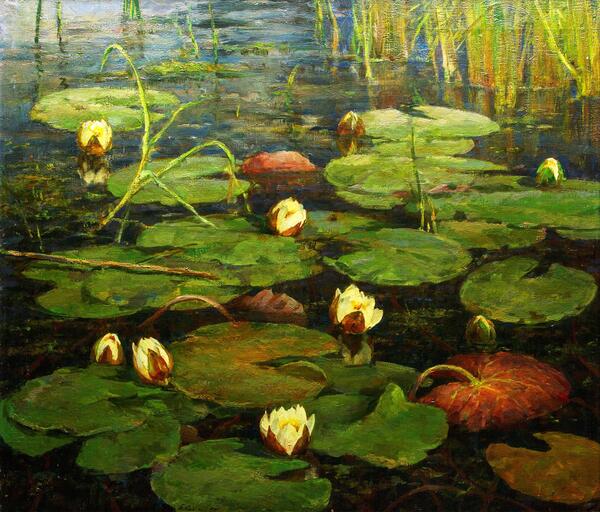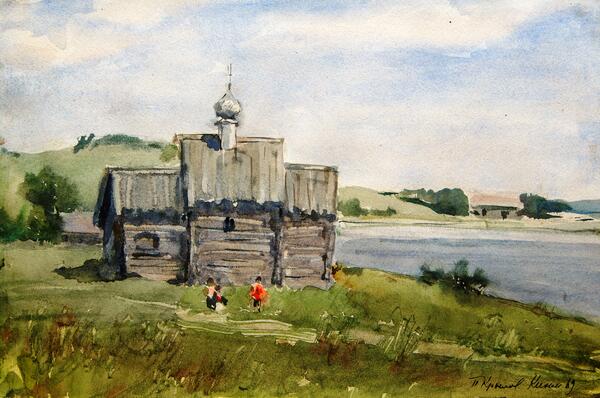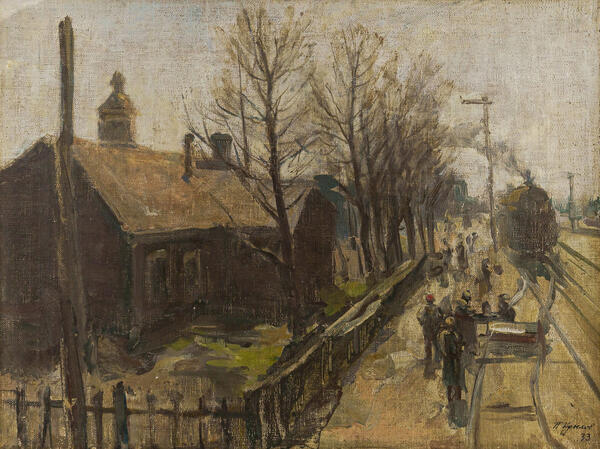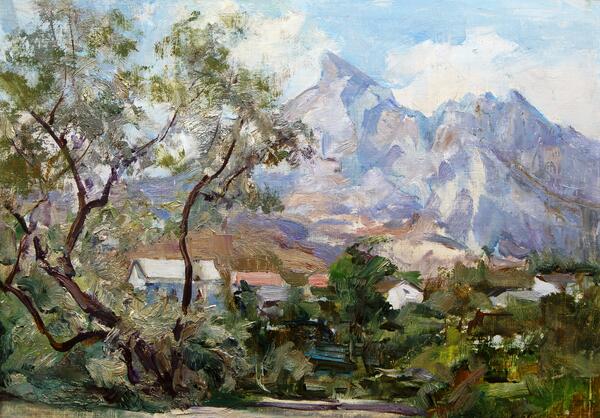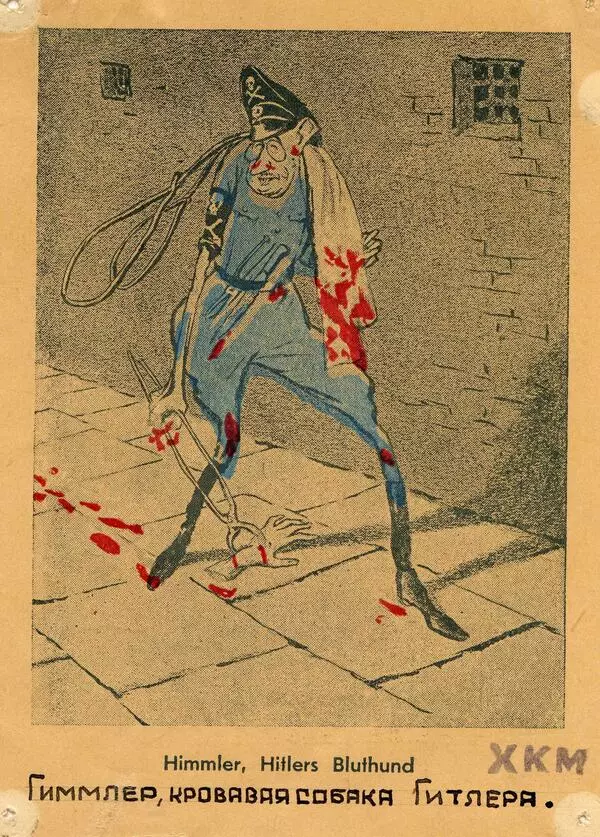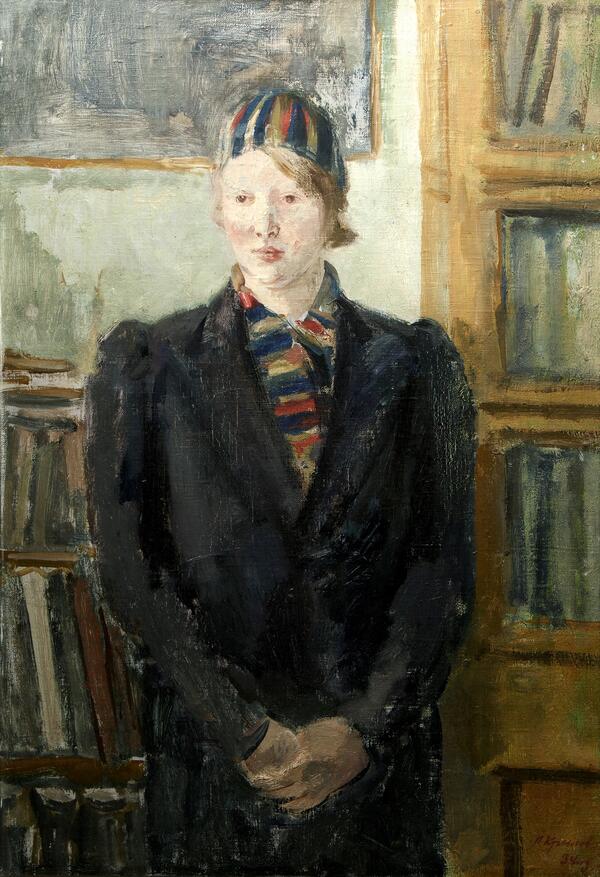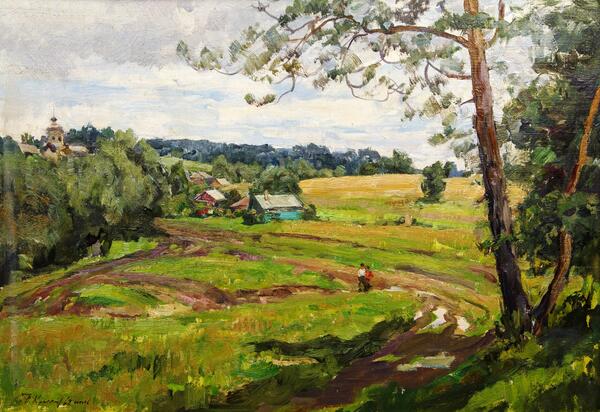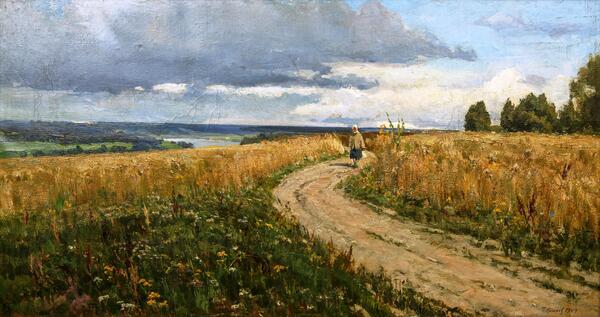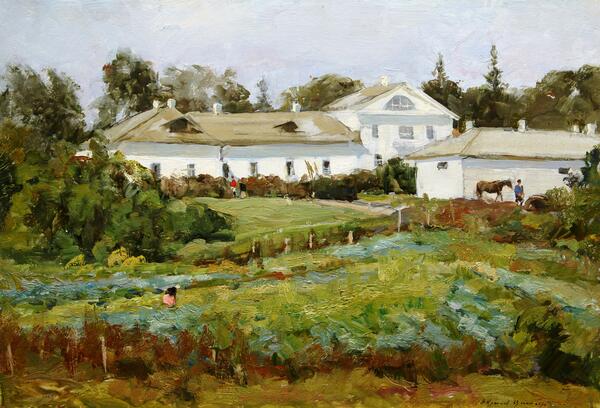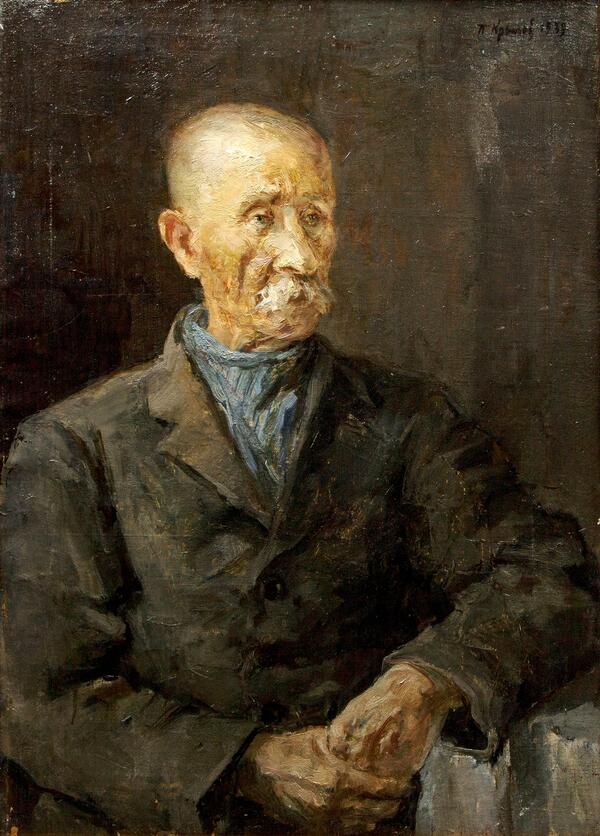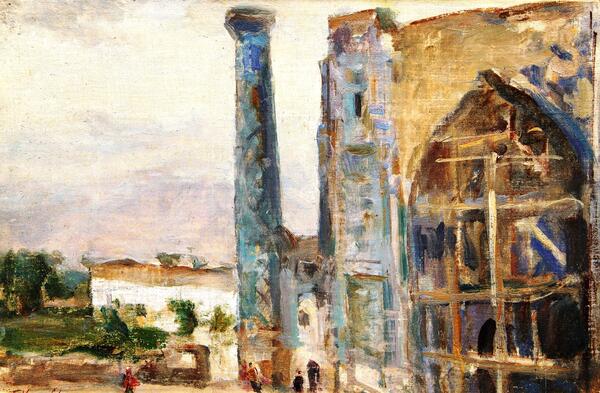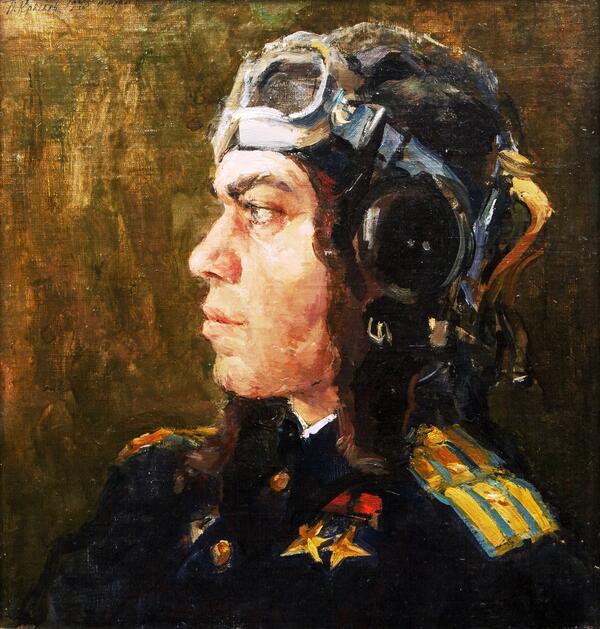During the 1930s, railway motifs were very prominent in the works of the Soviet artist Porfiry Nikitich Krylov. In 1933, along with other members of the increasingly popular Kukryniksy artistic group working for the Pravda newspaper, he undertook a creative railway journey across the Soviet Union. However, it was not just the artist’s creative work that was connected with train stations and trains but also his everyday life.
A railway travel pass from Moscow to Veshnyaki dated 1930 has been preserved in Porfiry Krylov’s archive. At that time, Krylov studied in Moscow, at the graduate school of the Vkhutein (Higher Art and Technical Institute), and together with his young wife Sonya Smirnova rented a room in the suburb of Moscow — the village of Veshnyaki, which is currently a district of the capital.
In the painting “In a Commuter Train”, the artist carefully noticed and conveyed in detail the images of his casual fellow commuters, the great-grandfathers of modern passengers. Hats serve as the telltale sign of the first third of the 20th century. For example, the Red Army soldier dozing on the left with a gun is wearing a budenovka — a uniform headdress of servicemen of the Workers’ and Peasants’ Red Army. The budenovka was in service from 1918 to 1940, until it was replaced by the ushanka hat.
The pensive man in the center is wearing a cap which was the most fashionable and popular male headdress in post-revolutionary Russia until the end of the Great Patriotic War. A dreamy girl near the window is shown carefully holding a pale blue hat with a dark ribbon on her lap. Hats were an integral attribute of women’s fashion of the upper and middle strata of society for centuries.
The Revolution of 1917 radically changed the foundations of life and social norms of people’s outfits but hats managed to maintain their place on the heads of Soviet fashionistas. In the 1930s, women wore felt hats cocked to the side and straw hats with narrow or wide brims.
In a similar watercolor
by Porfiry Krylov of the same name — “In a Commuter Train” — made in 1931, the
artist depicted a gentle blue-eyed girl wearing a dense light-gray head scarf.
This was how peasant women tied their heads since time immemorial, so at first glance
it becomes clear that the artist’s young fellow traveler hails from the
village.
